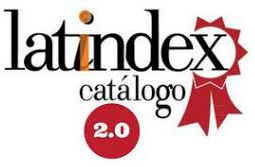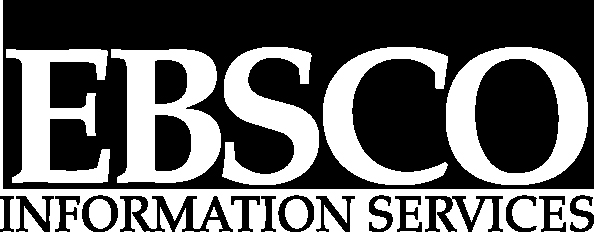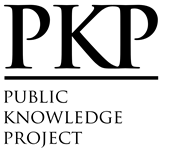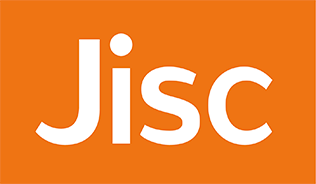As atividades online dos jornais finlandeses em um ambiente em constante mudança para o negócio da média
Resumo
Este artigo trata sobre as cambiantes estratégias online na edição de jornais. Examina a situação através do caso da Finlândia, um país com um índice muito alto de circulação de jornais impressos. Apesar do descenso no número de leitores, os jornais finlandeses tem mantido uma posição económica relativamente estável. Seus gerentes não tem se apressado na hora iniciar operações online e de experimentar novas vias de produção e distribuição, já que seus modelos de negócio tradicionais tem mantido sua economia.Desde a perspectiva europeia, Finlândia é um mercado excepcional para a imprensa porque a modalidade de subscrição está solidamente assentada. O sistema de entrega em domicílio também faz com que os jornais sejam um eficiente canal de marketing e, a sua vez, eles continuam recebendo a maior parte do gasto em publicidade. Além disso, os gerentes de jornais têm podido reter ou até melhorar seus ganhos apesar da tendência para a convergência, que está desafiando a lógica do consumo mediático através da emergência de serviços online. No presente estudo, nosso objetivo foi descobrir as opiniões de editores e gerentes de jornais com respeito às operações online atuais e no futuro próximo. Realizou-se uma enquete por internet entre editores e gerentes de jornais em 2013, que foi enviada a 236 personas, das quais responderam 56 (24 por cento). Os pesquisados representam a imprensa diária e a local, e a mostra foi geograficamente representativa. Os resultados da enquete demonstram que os jornais finlandeses são lentos na hora de adotar mudanças, talvez porque se tem preservado muito bem em um mercado protegido. Lentamente, se estão adaptando aos novos meios de comunicação e as operações online, embora o desenvolvimento tenha sido mais rápido nos jornais de maior tiragem que nos de distribuição local.
Downloads
Referências
Afuah, A. (2004). Business models: a strategic management approach. New York: Irwin/McGraw-Hill.
Afuah, A. & Tucci, C. L. (2001). Internet business models and strategies: text and cases. New York: McGraw-Hill.
Amit, R. & Zott, C. (2001). Value creation in e-business. Strategic Management Journal, 22, p. 493-520.
Applegate, L. M. (2000). E-business models: making sense of the internet business landscape (p. 49-101). In: Dickson, G. & DeSanctis, G. (eds.). Information technology and the future enterprise: New models for managers. Englewood Cliffs, NJ: Prentice-Hall.
Björkroth, T. & Grönlund, M. (2014). The growth of leading regional newspapers. Nordicom Review, 35 (1), p. 115-133.
Brousseau, E. & Penard, T. (2006). The economics of digital business models: a framework for analyzing the economics of platforms. Review of Network Economics, 6 (2), p. 81-110.
Casero-Ripollés, A. & Izquierdo-Castillo, J. (2013). Between decline and a new online business model: the case of the Spanish newspaper industry. Journal of Media Business Studies, 10 (1), p. 63-78.
Doyle, G. (2013a). Understanding media economics. 2nd ed. London: Sage.
Doyle, G. (2013b). Re-invention and survival: newspapers in the era of digital multiplatform delivery. Journal of Media Business Studies, 10 (4), p. 1-20.
Dubosson-Torbay, M.; Osterwalder, A. & Pigneur, Y. (2002). E-business model design, classification, and measurements. Thunderbird International Business Review, 44 (1): p. 5-23.
Finnish Advertising Council (2012). Mainonnan neuvottelukunta: mediamainonta kasvoi lähes neljä prosenttia [Advertising Council: media advertising growing for almost 4 percent]. Press release 24.1.2012. Retrieved from: http://www.tnsgallup.fi/doc/uutiset/Lehdistotiedote_24_1_2012.pdf.
Friedrichsen, M. & Mühl-Benninghaus, W. (2012). Convergence and business models: Innovations in daily newspaper economy (the case of Germany). Paper presented at the 10th World Media Economics & Management Conference, Thessaloniki, Greece, May 26, 2012.
George, G. & Bock, A. (2009). The business model in practice and its implications for entrepreneurship research. London: Imperial College (Working paper).
Hayes, J. L. & Graybeal, G. M. (2011). Synergizing traditional media and the Social Web for monetization: A modified media micropayment model. Journal of Media Business Studies, 8 (2), p. 19-44.
Holm, A. B.; Günzel, F. & Ulhøi, J. P. (2013). Openness in innovation and business models: lessons from the newspaper industry. International Journal Technology Management, 61 (3/4), p. 324 348.
Holm, A.; Uliyanova, A. & Ellerup Nielsen, A. (2013). Trigger of business model change in the newspaper industry. Paper presented at EMMA Conference, Bournemouth, UK, June 14, 2013.
Järventie-Thesleff, R.; Moisander, J. & Villi, M. (2014). The strategic challenge of continuous change in multi-platform media organizations: a strategy-as-practice perspective. International Journal on Media Management, 16 (3-4): 123-138, DOI: 10.1080/14241277.2014.919920.
Kleis Nielsen, R. (2012). Ten years that shook the media world: big questions and big trends in international media developments. Oxford: The Reuters Institute for the Study of Journalism.
Krone, J. & Grüblbauer, J. (2012). Convergence and business models: Innovations in daily newspaper economy (the case of Austria). Paper presented at the 10th World Media Economics & Management Conference, Thessaloniki, Greece, May 26, 2012.
Küng, L.; Picard, R. G. & Towse, R. (2008). The internet and the mass media. Los Angeles: Sage.
Lehtisaari, K.; Karppinen, K.; Harjuniemi, T.; Grönlund, M.; Lindén, C.-G.; Nieminen, H. & Viljakainen, A. (2012). Media convergence and business models: responses of Finnish daily newspapers. University of Helsinki. Communication Research Centre (CRC). Department of Social Research. Retrieved from: http://www.helsinki.fi/crc/Julkaisut/Media_Convergence.pdf. (accessed 10.10.2014).
Lehtisaari, K. & Grönlund, M. (2014). Sanomalehtien verkkostrategiat muuttuvassa toimintaympäristöss [Online strategies of newspapers in the changing operational environment] (p. 64-73). In: Lehtisaari, K. (ed.). Sanomalehti uudessa mediamaisemassa [Newspapers in the new media landscape]. Helsinki: TAT.
Lundén, K. (2013). Alma Aluemedia yllätettiin housut kintuissa [Alma Aluemedia was surprised ’without pants’]. Markkinointi & Mainonta, 25.10.2013, p. 4.
Luukka, T. (2014). Helsingin Sanomat vähentää yli 50 työpaikkaa [Helsingin Sanomat cutting more than 50 work places]. Helsingin Sanomat, 8.1.2014, p. A25.
LVM 35/2013 (2013). Lehdistön tulevaisuus [The future of the press]. Lehtiasiain neuvottelukunta (Pj. Harri Pursiainen). Liikenne- ja viestintäministeriön julkaisu 35/2013. Helsinki: Liikenne- ja viestintäministeriö. Retrieved from: http://urn.fi/URN:ISBN:978-952-243-369-5 (accessed 10.10.2014).
Morris, M.; Schindehutte, M. & Allen, J. (2005). The entrepreneur’s business model: toward a unified perspective. Journal of Business Research, 58, p. 726-35.
Nel, F. (2010). Where else is the money? Journalism Practice, 4 (3), p. 360-372. doi:10.10 80/17512781003642964.
Nieminen, H. (2010). The unravelling Finnish media policy consensus (p. 55-68). In: Levy, D. A. L. & Nielsen, R. K. (eds.). The changing business of journalism and its implications for democracy. Oxford: Reuters Institute for the Study of Journalism, Oxford.
OECD (2010). Working party on the information economy. the evolution of news and the internet. Paris: OECD. Retrieved from: http://www.oecd.org/document/48/0,3343,en_2649_33703_45449136_1_1_1_1,00.html (accessed 10.10.2014)
Osterwalder, A. (2004). The business model ontology: a proposition in a design science approach. Lausanne: University of Lausanne (Dissertation; 173).
Osterwalder, A.; Pigneur, Y. & Tucci, C. L. (2005). Clarifying business models: origins, present and future of the concept. Communications of the Association for Information Science (CAIS), 16: p. 1 -25.
PEJ (2011). The state of the news media 2011. Washington, D.C.: Pew Research Center’s Project for Excellence in Journalism. Retrieved from: http://stateofthemedia.org/2011/overview-2/ (accessed 10.10.2014).
Picard, R. G. (1989). Media economics: concepts and issues. Newbury Park, CA: Sage.
Picard, R. G. (2010). The future of the news industry. In: Curran, J. (ed.). Media and society. London: Bloomsbury Academic.
Picard, R. G. (2011a). Mapping digital media: digitization and media business models. New York: Open Society Foundations. Open Society Media Program. (Reference series; 5). Available at http://www.opensocietyfoundations.org/sites/default/files/digitization-media-business-models-20110721.pdf. (accessed 10.10.2014).
Picard, R. G. (2011b). The success trap: why doing things right becomes wrong over time. Tampere: University of Tampere (The 2011 C.V. Åkerlund Lecture on Media Management).
Picard, R. G. (2014). New approaches to paid digital content (p. 80-82). In: Newman, N. & Levy, D. (eds.). Reuters Institute digital news report 2014: tracking the future of news. Oxford: University of Oxford, Reuters Institute.
Rappa, M. (2005). Business models on the web. Raleigh, NC: North Carolina State University Institute for Advanced Analytics. Managing the Digital Enterprise. Retrieved from: http://digitalenterprise. org/models/models.html (accessed 10.10.2014)
Seelos, C. & Mair, J. (2007). Profitable business models and market creation in the context of deep poverty: a strategic view. Academy of Management Perspectives, 21, p. 49-63.
Shafer, S. M.; Smith, H. J. & Linder, J. (2005). The power of business models. Business Horizons, 48, p. 199-207.
Stewart, D. W. & Zhao, Q. (2000). Internet marketing, business models and public policy. Journal of Public Policy and Marketing, 19, p. 287-296.
Teece, D. J. (2010). Business models, business strategy and innovation. Long Range Planning, 43, p. 172-194.
Timmers, P. (1998). Business models for electronic markets. Electronic Markets, 8 (2), p. 3-8.
TNS Gallup (2014). Mainosvuosi 2013 [Advertising year 2013] Press release 29.1.2014. Retrieved from: http://www.tns-gallup.fi/doc/media_intelligence/Lehdistotiedote_29_1_2014__Tarkennettu_6_2.pdf (accessed 10.10.2014).
Vartanova, E.; Makeenko, M. & Vyrkovsky, A. (2012). Convergence and business models: innovations in daily newspaper economy (the case of Russia). Paper presented at the 10th World Media Economics & Management Conference, Thessaloniki, Greece May 26, 2012.
Weill, P. & Vitale, M. R. (2001). Place to space: migrating to e-business models. Boston: Harvard Business School Press.
Zott, C.; Amit, R. & Massa, L. (2011). The business model: recent developments and future research. Journal of Management, 37 (4), p. 1019-1042.
Copyright (c) 2015 Katja Lehtisaari, Mikko Grönlund

This work is licensed under a Creative Commons Attribution-NonCommercial 4.0 International License.
Os autores detêm os direitos autorais e garantem à revista o direito de ser a primeira publicação do trabalho. Caso uma tradução do artigo já publicado na Austral Comunicación possa ser publicada em outra revista, solicita-se registrar a publicação original na versão traduzida.
A licença utilizada é CC BY-NC-SA, que permite compartilhar (copiar e redistribuir o material em qualquer meio e formato) e adaptar (remixar, transformar e construir sobre o material) nos seguintes termos: atribuição (reconhecer a autoria) e não comercial (o material não pode ser usado para fins comerciais). Atualização: 1 de fevereiro de 2022.
A Austral Comunicación permite ao (s) autor (es) reter os direitos de publicação sem restrições.











































